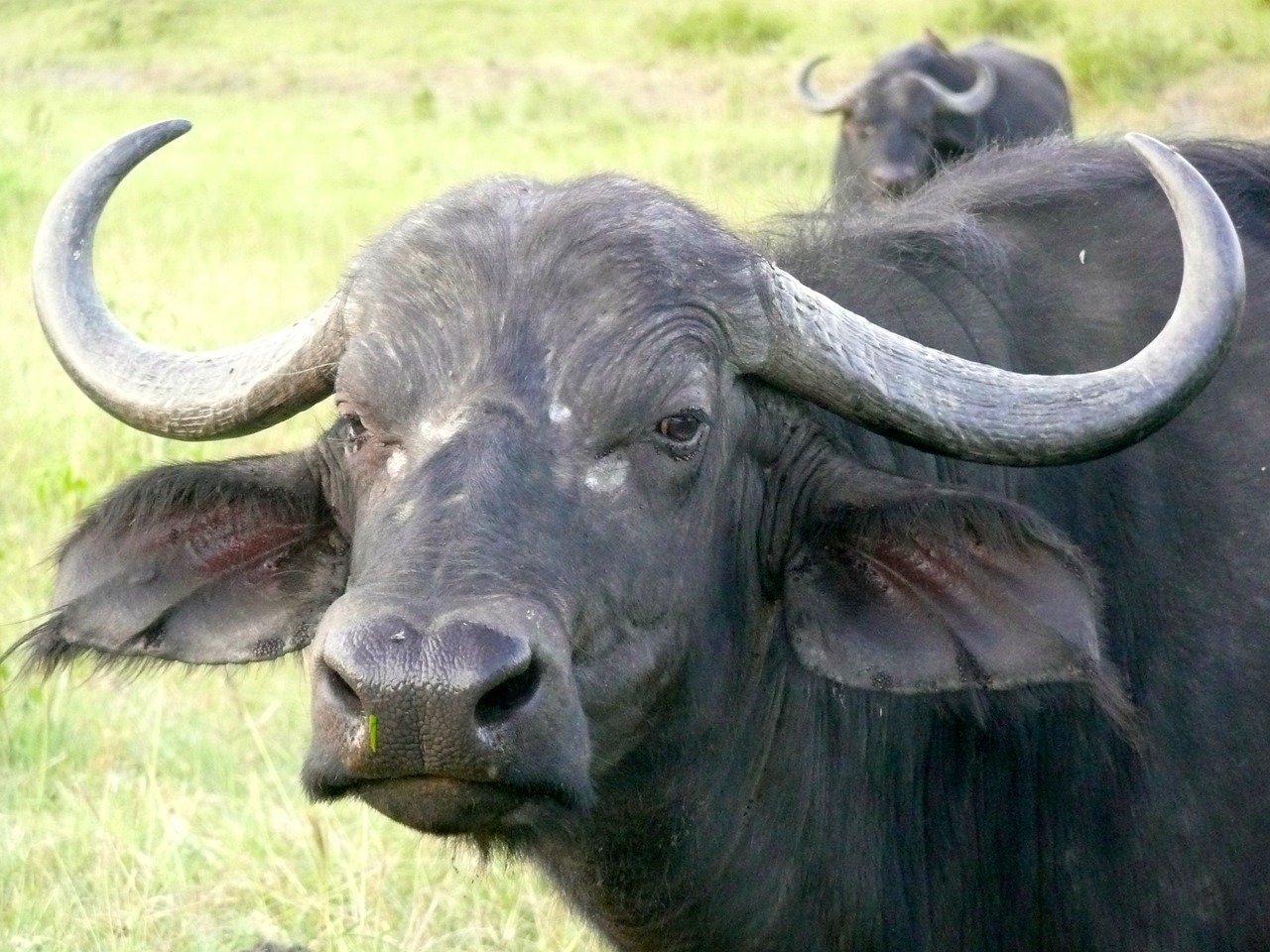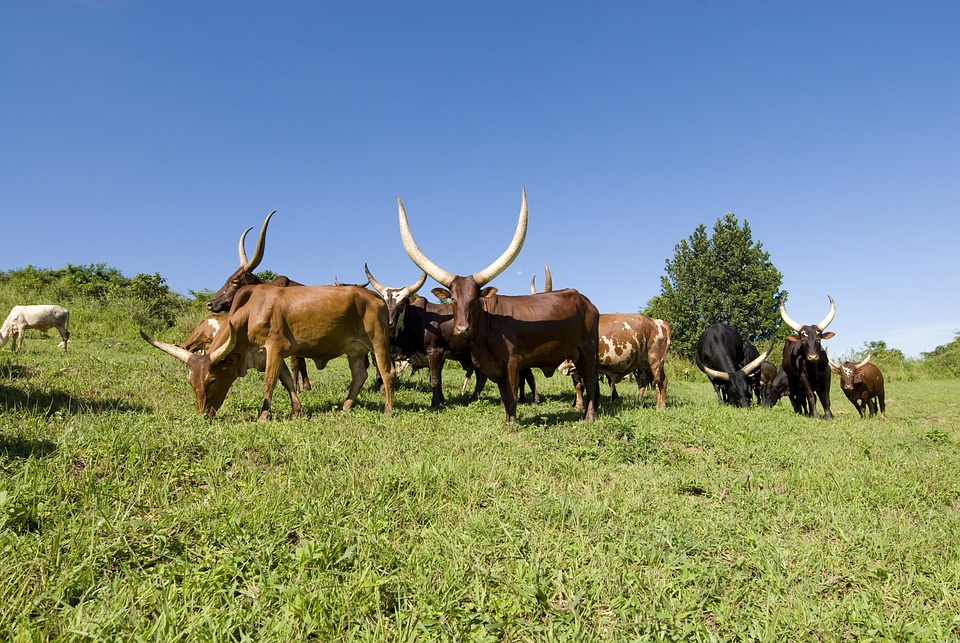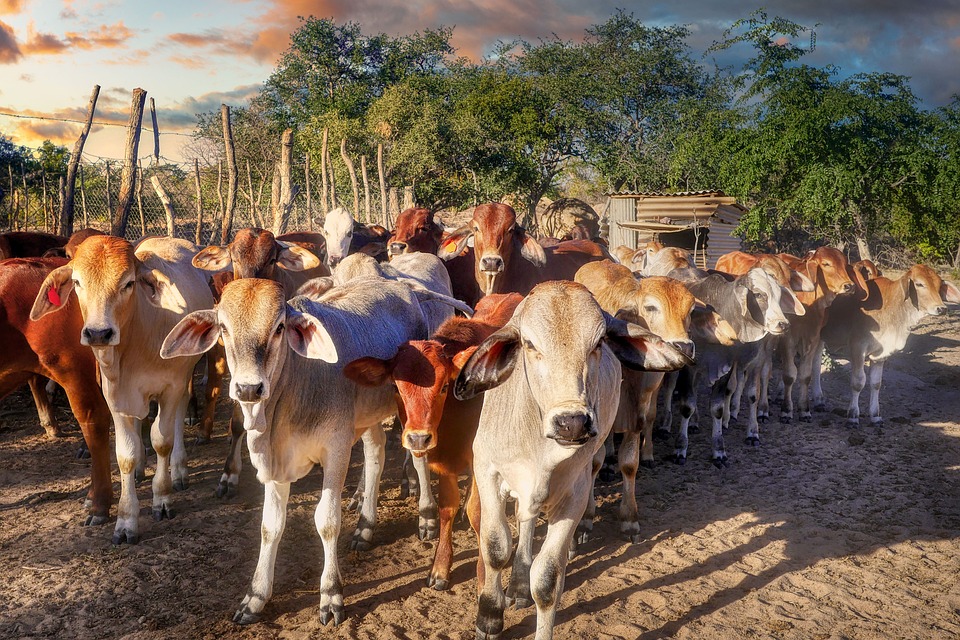The Zimbabwe veterinary services have confirmed an outbreak of Theileriosis throughout the country.
January disease
In Africa, this disease, also known as January disease, is caused by the cattle-adapted Theileria parva, which is transmitted by brown ear ticks (Rhipicephalus appendiculatus). Another similar disease which is caused by buffalo-adapted Theileria parva, is known as East Coast Fever and Corridor or Buffalo disease. Although buffalo is mildly affected by the latter, it is usually deadly in cattle.
The South African Department of Agriculture, Land Reform and Rural Development consequently issued a warning to South African farmers to be on the alert for early symptoms of the disease. The occurrence of the diseases coincides with the breeding of brown ear ticks during the summer rainfall season, with a heightened risk from December to May in South Africa. No outbreaks of the cattle-adapted strains of Theileria parva, have occurred in South Africa since the early 1950’s, when it was eradicated. South Africa remains free of both forms of the disease, hence the caution to prevent it from being re-introduced into the country where both forms are reportable animal diseases.
East Coast fever
The disease was first reported in Southern Africa south of the Zambezi River in 1902. It was named East Coast fever after it was determined that the disease had originated in cattle imported from the East Coast of Africa to other African countries. It is therefore of major economic importance to cattle farmers in Africa, where it occurs in Tanzania, from where it spread to South Africa, Zimbabwe, Zambia, Mozambique, Malawi, Burundi, Rwanda, Uganda, the Democratic Republic of Congo, Kenya, and South Sudan. It was even introduced to the Comoros by cattle imported from Tanzania.
Symptoms
The most certain signs include a very high fever and the enlarged lymph nodes near the tick bite sites on the animal. This area is mostly restricted to the ears and in the immediate area around the ears, hence the name brown ear tick. Other symptoms include lethargy, a loss of appetite, which leads to loss of condition and a reduction in milk production. Also, there may be a nasal discharge, opaque cornea, diarrhoea, pulmonary oedema, and anaemia.
Checklist of symptoms
In T. parva infection, there is a decrease in white blood cells. The first sign is an enlargement of lymph nodes draining the site of tick feeding. All the lymph glands become swollen. Fever commences one to four days later, and the temperature quickly rises to 40 ° Celsius. The fever remains high until death. The animal appears listless, loses appetite and condition, and milk production is reduced.
Respiration is fast and the animal may have a brief bout of coughing. There may initially be constipation, but after a few days of fever, diarrhoea is present. The faeces contain blood and is coated in bloody mucous. The eyes have a watery discharge and, in some animals, sensitivity to light may occur and the cornea may appear opaque. A subacute form occurs in calves born of immune cows in an area where the disease is endemic. The clinical signs are the same as in the acute form but not as pronounced, and recovery is better.
Confirmation of diagnosis
If the disease is suspected, it is most important to immediately contact a state or private veterinarian to take smears to identify the parasite. The diagnostic process of theileriosis consists of clinical signs, a blood smear examination, lymph node biopsy, histopathological examination, and serological tests. Post mortem findings mainly include damage to the lymph and respiratory systems.
Incubation
The parasite spreads quickly and aggressively; the incubation period lasts around ten to 25 days, with death as quickly as eighteen to thirty days after the initial tick infestation. According to some sources, the development of the disease is even more rapidly, with the incubation period from eight to twelve days, and the disease lasts for ten to nineteen days before the animal dies. Mortalities can be up to 100%. Cattle endemic to the regions where the parasite occurs can be given medication and will survive to various degrees. If they survive, they become carriers.

Buffalo-adapted Theileria parva is known as East Coast Fever and Corridor or Buffalo disease. Although buffalo is mildly affected by the latter, it is usually deadly in cattle.
Life cycle of Theileria
The Theileria parasite passes through three distinct stages in its life cycle. The first stage occurs in the ticks, the second in the host when it is bitten by an infective tick during feeding on the animal’s blood, and the third stage takes place when the parasite is ingested by the larval and nymphal ticks and blood while feeding on infected animals. When the ticks feed on another animal, the parasite is transferred.
Treatment
There are different treatments with varying efficiency. The ultimate cause of death is pulmonary oedema. In 2010, a vaccine to protect cattle against East Coast fever was approved and registered by the governments of Kenya, Malawi, and Tanzania.
Prevention and control
The disease can be controlled by controlling the ticks on cattle with pesticides applied in dip baths or spray races, and by using indigenous cattle breeds that can acquire immune resistance to the vector ticks.
Checklist of preventive measures
The reintroduction of January disease and or East Coast Disease could have a devastating effect on livestock and farmers. The management, control and or eradication of this disease require highly intensive and expensive efforts that are difficult to sustain.
To help prevent Theileria spp from recurring, the following is important:
Herd health management
Use of preventative vaccination Control of ticks
Since brown ear ticks act as a vector, it is necessary to keep animals in tickfree surroundings. Systemic dipping and rotation of grazing land will help. Should there be a disease suspicion, frequent acaricide application must be started immediately (at least three times within two weeks).
- A regular treatment of cattle with suitable acaricide during the period when first stages of ticks occur.
- Effective treatment with acaricide every twelve days will prevent the development of nymphs and kill all stages.
- Where host ticks are involved, five to seven days of treatment will prevent engorgement. A highly volatile acaricide should be used for spraying buildings to reach ticks hidden in cracks or crevices.
- All grass and boulders where ticks may hide must also be removed.
Control of movement
No other animals should have access to pasture or water reservoirs used for indigenous stock.
Animal health when suspecting infection
- Recording of temperature at regular intervals.
- Examination of temperature, blood count and lymph nodes of suspected animals.

Indigenous cattle are more resilient to Theileriosis. (Source: Pixabay)
Status of Theileriosis in South Africa
South Africa has not imported any live cattle from Zimbabwe for many years and enforced import requirements for other risk commodities, like hides and hay, requiring that these must be free of ticks. However, factors such as illegal importation (smuggling) of cattle, or inadvertent introduction of infected ticks via people, hay, hides, or cars crossing the border into South Africa, may still pose a risk. In South Africa, collected samples must immediately be sent to Onderstepoort Veterinary Laboratory for testing.
Samples must be submitted via the state veterinarian and sample submission forms must be completed in full, including full details about the location, reasons for testing and the history of the case. The Department of Agriculture, Land Reform and Rural Development encourages everyone to practice strict biosecurity measures to reduce the risk of all animal diseases, including not introducing animals of unknown health status into their herds.
Contact Dr Danie Odendaal at 082-454-0532 or Theileriosis https://www.youtube.com/watch?v=KrrjUgBCRyE
Beheerde en aanmeldbare dieresiektes. (2018) Landbou.com https://www.landbou.com/landbou/kundiges/landbou%7ckundiges%7cvravir-faffa/beheerde-en-aanmeldbaredieresiektes-20180411
Concerning disease outbreak in Zimbabwe. (2024) Red Meat Producers Organisation (RPO) East Coast Fever. (2023) Wikipedia https://en.wikipedia.org/wiki/
East_Coast_fever (2023): Wikipedia: https://en.wikipedia.org/wiki/East_Coast_fever#:~:text=East%20Coast%20fever%2C%20also%20known%20as%20theileriosis%2C%20is,between%20cattle%20is%20a%20tick%2C%20Rhipicephalus%20appendiculatus.%20
Kawsar, I. (n.d.) Theileriosis in Cattle: Causes, Signs, Diagnosis, Treatment, and Control. The VetX https://www.thevetexpert.com/theileriosis-in-cattle-causes-signs-diagnosistreatment-and-control/
Theileria. (2023) Wikipedia https://en.wikipedia.org/wiki/Theileria
Theileriosis. (n.d.) World Organisation for Animal Health https://www.woah.org/en/disease/theileriosis/









